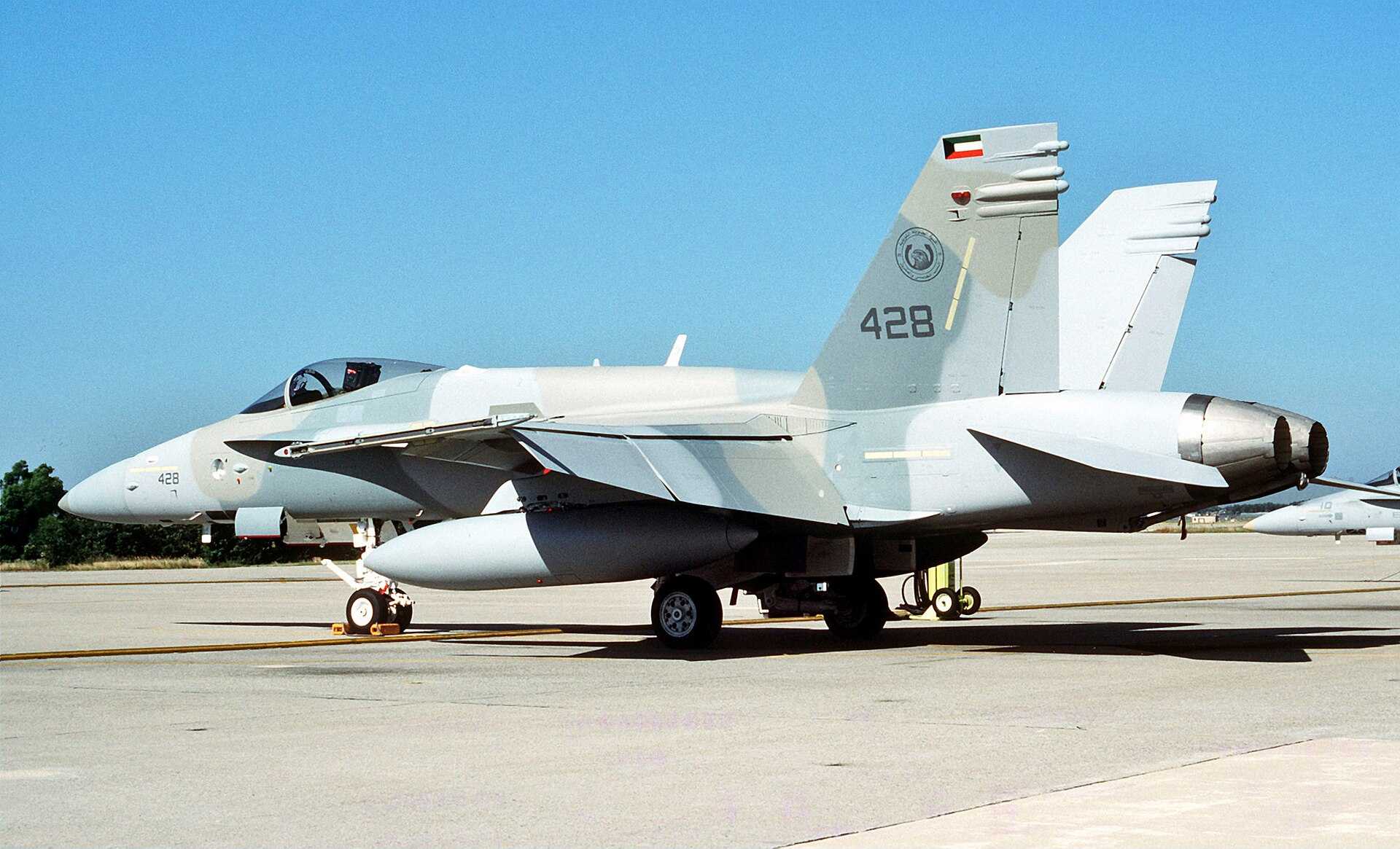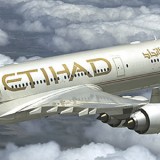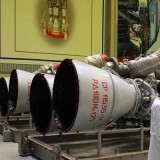Malaysia awaits final US approval to complete the purchase of 30 F/A-18 Hornet fighters from Kuwait

{loadposition bannertop}
{loadposition sidebarpub}
As reported by Astro Awani on February 1, 2025, the Royal Malaysian Air Force (RMAF) is expected to finalize the acquisition of 30 used F/A-18C/D Hornet fighter jets from the Kuwaiti Air Force (KAF) in 2025. The deal has been under negotiation for several years and is now in its final stages, requiring only documentation and approvals from Kuwait and the United States. This purchase is intended to maintain Malaysia’s air defense capabilities while awaiting the implementation of its Multi-Role Combat Aircraft (MRCA) program, projected to commence in the 15th Malaysia Plan around 2040.Follow Army Recognition on Google News at this link
The F/A-18C is a single-seat variant, while the F/A-18D is a two-seat version configurable for training or as an all-weather strike aircraft with a Weapons and Sensors Officer operating targeting systems. (Picture source: US DoD)
Malaysia’s interest in acquiring the Kuwaiti Hornets dates back to at least 2017, when the country first explored options to supplement its fighter fleet. The Royal Malaysian Air Force (RMAF) currently operates eight two-seat F/A-18D Hornets, acquired in 1997, under the 18th Squadron at Butterworth Air Base. Over the years, these aircraft have undergone upgrades to avionics, communications, and weapons systems, including the integration of the Joint Helmet Mounted Cueing System (JHMCS) and the Link 16 datalink. The MRCA program, originally intended to modernize Malaysia’s air combat capabilities, has faced delays, making the interim acquisition of the Kuwaiti Hornets a temporary solution.
Kuwait operates 39 F/A-18C/D Hornets, delivered between 1992 and 1993, as part of its air force modernization following the Gulf War. The country is transitioning to newer aircraft, including the F/A-18E/F Super Hornet and Eurofighter Typhoon, leading to the decision to sell its older Hornet fleet. Malaysia officially expressed interest in these aircraft during a visit by Defence Minister Datuk Seri Mohamed Khaled Nordin to Kuwait in October 2024. During the visit, Khaled inspected the aircraft and held discussions with Kuwaiti officials, resulting in the establishment of a joint committee to expedite the negotiation process. The sale remains contingent on approval from the United States, as the aircraft are American-made.
One of the primary reasons for Malaysia’s acquisition is the need to address capability gaps in its air force while awaiting the MRCA program. The RMAF has faced maintenance and operational challenges, particularly with its Sukhoi Su-30MKM fleet, which has been affected by serviceability issues due to logistical constraints. Expanding the Hornet fleet is seen as a way to sustain operational capability without further delays. The relatively low flight hours and well-maintained condition of the Kuwaiti Hornets make them a viable option for extending Malaysia’s fighter fleet while offering an opportunity to standardize maintenance and operations.
The acquisition has encountered challenges, including the requirement for approval from the United States, which has also considered the Kuwaiti Hornets for its Marine Corps. Tunisia has reportedly expressed interest in purchasing the same aircraft, creating potential competition. The process of securing U.S. authorization has caused delays, though Malaysian officials anticipate a resolution. Another challenge is the logistical and maintenance burden associated with operating an aging fleet. While Malaysia’s existing Hornets have been upgraded, the Kuwaiti models belong to an earlier production block, which may lead to compatibility issues with spare parts and software integration. Expanding the fleet with older aircraft may also impact operational budgets and maintenance capacity.
The F/A-18C and F/A-18D Hornet are twin-engine, carrier-capable multirole fighter aircraft developed in 1987 as part of a block upgrade of the original F/A-18 Hornet, which was initially designed in the 1970s. The upgrade incorporated enhanced radar, avionics, and expanded weapons compatibility, including the AIM-120 AMRAAM, AGM-84E SLAM, and AGM-65F Maverick missiles. The F/A-18C is a single-seat variant, while the F/A-18D is a two-seat version configurable for training or as an all-weather strike aircraft with a Weapons and Sensors Officer operating targeting systems. The aircraft includes the Martin-Baker NACES ejection seat, a self-protection jammer, and a synthetic aperture radar for ground mapping in low-visibility conditions.
Models delivered since 1989 feature improved night attack capabilities with the Hughes AN/AAR-50 thermal navigation pod, AN/AAS-38A NITE Hawk FLIR targeting pod, night vision compatibility, and upgraded multi-function displays. Some F/A-18D aircraft are configured for reconnaissance with the ATARS electro-optical sensor package. The aircraft are powered by two F404-GE-402 enhanced performance engines, increasing static thrust by 10%. Since 1993, they have included a laser designator/ranger for self-marking and targeting. Production ended in 2000, with the last F/A-18C delivered to Finland and the final F/A-18D to the U.S. Marine Corps. The U.S. Navy retired its F/A-18C/D fleet in 2019, but the U.S. Marine Corps continues to operate and upgrade its aircraft, integrating the APG-79(V)4 AESA radar system.

{loadposition bannertop}
{loadposition sidebarpub}
As reported by Astro Awani on February 1, 2025, the Royal Malaysian Air Force (RMAF) is expected to finalize the acquisition of 30 used F/A-18C/D Hornet fighter jets from the Kuwaiti Air Force (KAF) in 2025. The deal has been under negotiation for several years and is now in its final stages, requiring only documentation and approvals from Kuwait and the United States. This purchase is intended to maintain Malaysia’s air defense capabilities while awaiting the implementation of its Multi-Role Combat Aircraft (MRCA) program, projected to commence in the 15th Malaysia Plan around 2040.
Follow Army Recognition on Google News at this link
The F/A-18C is a single-seat variant, while the F/A-18D is a two-seat version configurable for training or as an all-weather strike aircraft with a Weapons and Sensors Officer operating targeting systems. (Picture source: US DoD)
Malaysia’s interest in acquiring the Kuwaiti Hornets dates back to at least 2017, when the country first explored options to supplement its fighter fleet. The Royal Malaysian Air Force (RMAF) currently operates eight two-seat F/A-18D Hornets, acquired in 1997, under the 18th Squadron at Butterworth Air Base. Over the years, these aircraft have undergone upgrades to avionics, communications, and weapons systems, including the integration of the Joint Helmet Mounted Cueing System (JHMCS) and the Link 16 datalink. The MRCA program, originally intended to modernize Malaysia’s air combat capabilities, has faced delays, making the interim acquisition of the Kuwaiti Hornets a temporary solution.
Kuwait operates 39 F/A-18C/D Hornets, delivered between 1992 and 1993, as part of its air force modernization following the Gulf War. The country is transitioning to newer aircraft, including the F/A-18E/F Super Hornet and Eurofighter Typhoon, leading to the decision to sell its older Hornet fleet. Malaysia officially expressed interest in these aircraft during a visit by Defence Minister Datuk Seri Mohamed Khaled Nordin to Kuwait in October 2024. During the visit, Khaled inspected the aircraft and held discussions with Kuwaiti officials, resulting in the establishment of a joint committee to expedite the negotiation process. The sale remains contingent on approval from the United States, as the aircraft are American-made.
One of the primary reasons for Malaysia’s acquisition is the need to address capability gaps in its air force while awaiting the MRCA program. The RMAF has faced maintenance and operational challenges, particularly with its Sukhoi Su-30MKM fleet, which has been affected by serviceability issues due to logistical constraints. Expanding the Hornet fleet is seen as a way to sustain operational capability without further delays. The relatively low flight hours and well-maintained condition of the Kuwaiti Hornets make them a viable option for extending Malaysia’s fighter fleet while offering an opportunity to standardize maintenance and operations.
The acquisition has encountered challenges, including the requirement for approval from the United States, which has also considered the Kuwaiti Hornets for its Marine Corps. Tunisia has reportedly expressed interest in purchasing the same aircraft, creating potential competition. The process of securing U.S. authorization has caused delays, though Malaysian officials anticipate a resolution. Another challenge is the logistical and maintenance burden associated with operating an aging fleet. While Malaysia’s existing Hornets have been upgraded, the Kuwaiti models belong to an earlier production block, which may lead to compatibility issues with spare parts and software integration. Expanding the fleet with older aircraft may also impact operational budgets and maintenance capacity.
The F/A-18C and F/A-18D Hornet are twin-engine, carrier-capable multirole fighter aircraft developed in 1987 as part of a block upgrade of the original F/A-18 Hornet, which was initially designed in the 1970s. The upgrade incorporated enhanced radar, avionics, and expanded weapons compatibility, including the AIM-120 AMRAAM, AGM-84E SLAM, and AGM-65F Maverick missiles. The F/A-18C is a single-seat variant, while the F/A-18D is a two-seat version configurable for training or as an all-weather strike aircraft with a Weapons and Sensors Officer operating targeting systems. The aircraft includes the Martin-Baker NACES ejection seat, a self-protection jammer, and a synthetic aperture radar for ground mapping in low-visibility conditions.
Models delivered since 1989 feature improved night attack capabilities with the Hughes AN/AAR-50 thermal navigation pod, AN/AAS-38A NITE Hawk FLIR targeting pod, night vision compatibility, and upgraded multi-function displays. Some F/A-18D aircraft are configured for reconnaissance with the ATARS electro-optical sensor package. The aircraft are powered by two F404-GE-402 enhanced performance engines, increasing static thrust by 10%. Since 1993, they have included a laser designator/ranger for self-marking and targeting. Production ended in 2000, with the last F/A-18C delivered to Finland and the final F/A-18D to the U.S. Marine Corps. The U.S. Navy retired its F/A-18C/D fleet in 2019, but the U.S. Marine Corps continues to operate and upgrade its aircraft, integrating the APG-79(V)4 AESA radar system.




